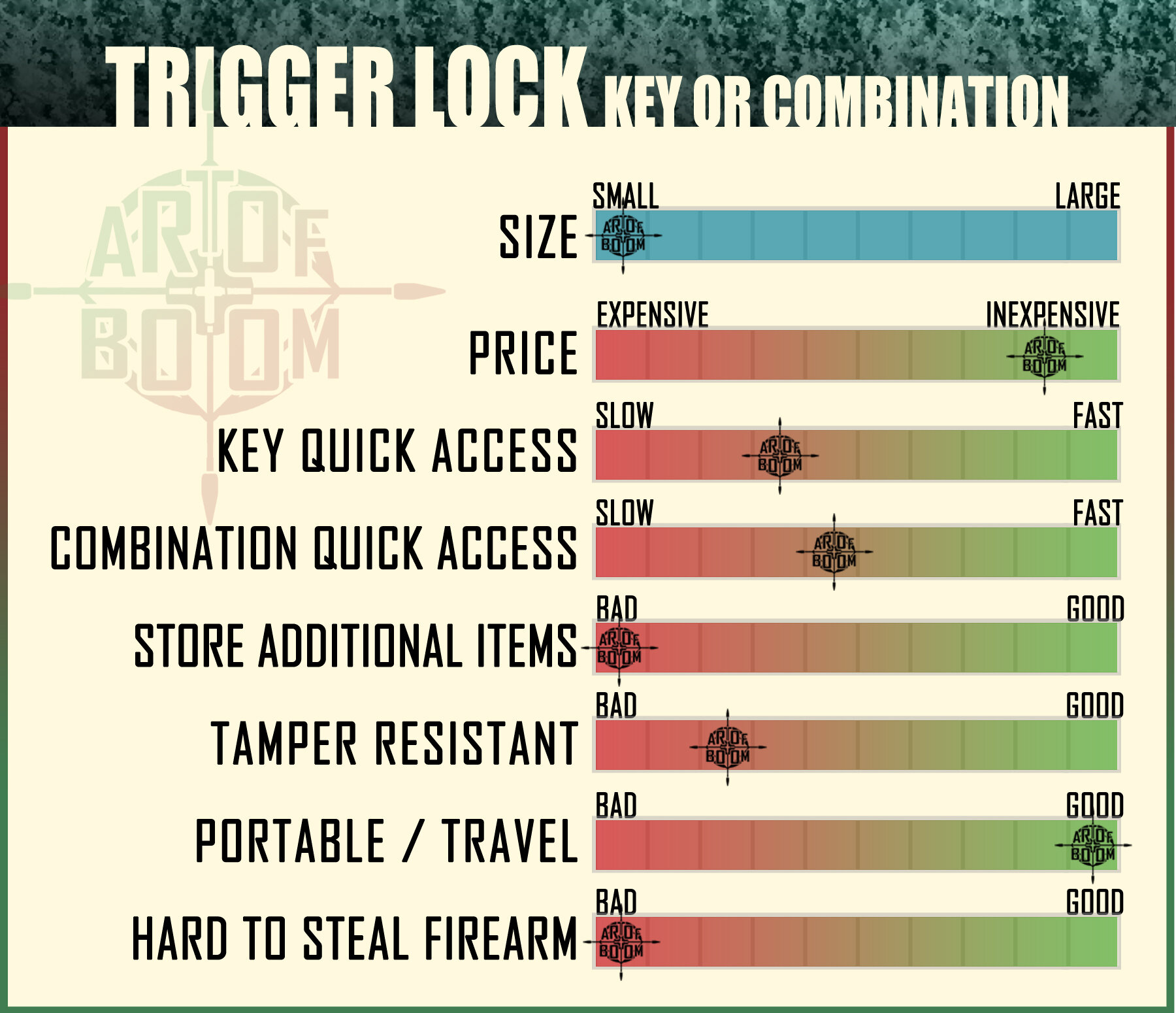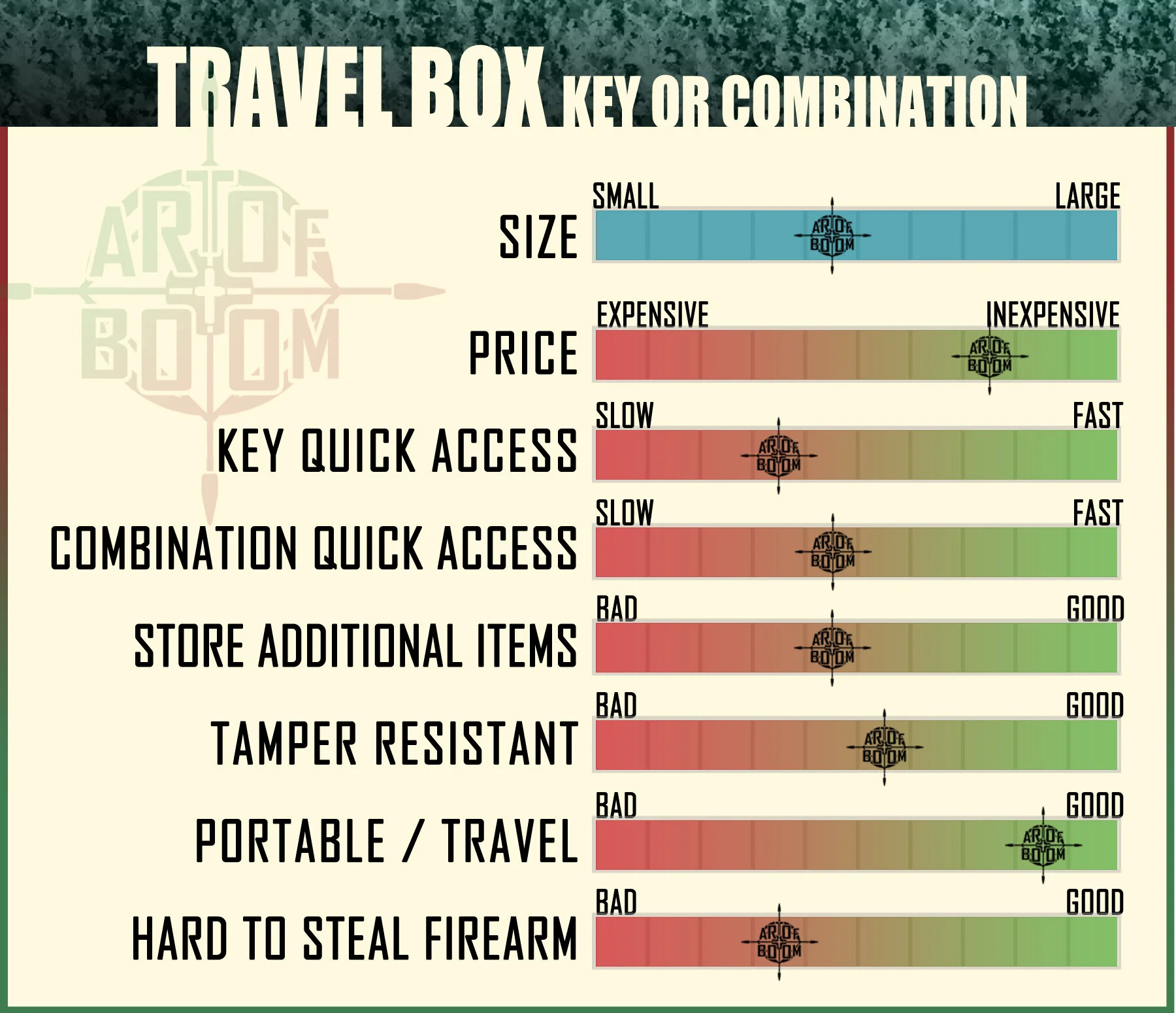Learn the Ins and Outs of Securing and Storing Your Firearm
Properly storing your firearm is one of the main keys to being a responsible gun owner. You may not have children in your home but may have friends and family members that have kids who love to snoop around, or you may have someone living with you that suffers from some sort of depression. Either way, if you have people who will be coming over or living with you who may make poor decisions with a firearm, you need to make sure you limit their access to your firearm.
We put locks on cabinets with cleaning supplies in order to keep our little ones safe. Prescription drugs are locked in medicine cabinets. When not using a miter saw, the blade is locked and unplugged, and when not using firearms they should be locked up and secure if there is a chance someone could acess your firearm without permission.
So, what are the options when it comes to locking up and securing your firearm? We will evaluate the wide range of options to properly securing your firearm and which option is best for different situations.
Key Locks use a physical key that is inserted into the lock. Some key locks are easy to pick and don’t require much effort to break into. Other tubular locks aren’t as deep and aren’t as easy to pick. Key locks tend to be the slowest form of accessing your firearm since the key has to be located then inserted before opening your device.
Combination locks typically use a linear design where the user is required to line up 4-6 numbers in the correct order to unlock the mechanism. Combination locks are more convenient than key locks since you don’t have to track down the key to access your firearm.
Biometric Locks will unlock your device once the pre programmed fingerprint is placed on the finger scanner. Typically these locks will also have a key lock just in case there is an issue with the battery or biometric portion of the lock. When operating correctly, Biometric Locks will give you the quickest access to your firearm. However, there have been some issues with fingers not scanning correctly and firearms can’t be accessed if wearing gloves.
Key Pads are typically digital but may be mechanical. Digital keypads rely on a battery source to keep it running but most keypads can work for years without needing to replace the batteries. Keypads allow for very quick access with a simple 4-6 pin combination. Digital keypads also have security features which disable the device for a certain amount of time after a certain amount of incorrect entries. Digital keypads have a backup key just in case there are issues with the battery or code.
Use the following quick view guides to help identify which option works best for you.
Cable locks are the most basic options when it comes to securing your firearm. The concept is simple and it doesn’t take up much extra space.
This lock prevents ammo from being introduced via a magazine into the chamber and the gun is inoperable because the firing pin cannot make contact with ammo that may be manually placed in the chamber. The primary lock used on a cable lock is a key lock but there are some cable locks that will have a combination lock. Based on the cable and gun, you may be able to wrap the cable around an item that can't be moved in order to prevent your firearm from being stolen.
Trigger locks cover the trigger and prevent it from being depressed. You can still rack a round into the chamber but you just can’t pull the trigger. A trigger lock should not be used on a single action revolver or other firearm that has a hammer that can be pulled back and released before it is fully cocked.
The primary locking mechanism for the trigger lock is a key lock. However, combination and biometric locks are also available. There are some quick release biometric trigger locks like this one from (fill in product info) that allow for the firearm to be chambered and ready to use. Biometric locks unlock your device by scanning your already registered fingerprint. Once your hand is in shooting position, you place your index finger on the biometric lock and the lock drops off.
Travel Box Safes are the best option for a wide array of usages. These styles of safes typically offer an option to use a cable to secure the box to a stationary object to keep the safe from being stolen. When the cable is used with the box, a person can secure the box under the seat of a vehicle or to a structural part of a home or hotel room. There are less expensive options made out of sheet metal and cheap locks or you can buy expensive options using digital entry, are water and dirt proof, and can float.
Wall / Desk Mounted Small Safes are easy to hide and make it easy to access your firearm in an area you can’t store a large safe. These safes are also ideal when you don’t want to open up a large safe exposing all of your firearms and valuables. You can easily fasten these to the floor under your bed, under a desk, or on a wall in a closet. Some of these safes will pop open presenting the gun handle to you quickly. When coupled with a keypad or biometric safe, these can be very convenient and quick to use.
Large safes are the most traditional option for firearms as they can store multiple firearms or other valuables. Large safes are typically more difficult to break into as the locking mechanisms are more sturdy and harder to pick. Larger safes can be referred to as “gun safes” or “gun cabinets”. “Gun cabinets” are less expensive, aren’t fire rated, made of lighter weight materials, and normally use a key locking mechanism. Large “gun safes” are typically 3 to 4 times heavier than metal “gun cabinets” since they are fire rated, use durable thick metal and have a more sturdy locking mechanism. Safes and cabinets can be secured to the floor or wall to prevent someone from stealing your whole safe.
Hidden drawers, cabinets, and shelves are great for hiding your firearm in plain sight. The downside to using a hidden compartment strategy with no locking mechanism is; once a person watches you access your firearm one time they can access it as well without any pins, codes, or keys. If you are trying to keep a firearm out of the hands of children and they know where your hidden compartment is they will have access to that firearm whenever they want. Some of these commercially produced hidden compartments have a locking mechanism that uses a switch or magnet to unlock the compartment.
If you own a firearm you should own something to secure your firearm. You may not have to use it all of the time but you should have one for when it is necessary, like if you leave your gun at home while you go out or when you have children coming over to your house. You can get by with spending $15 or spending thousands on a device to secure your weapon. Like many gun owners you may opt for a combination of these options to suit your specific needs.

















